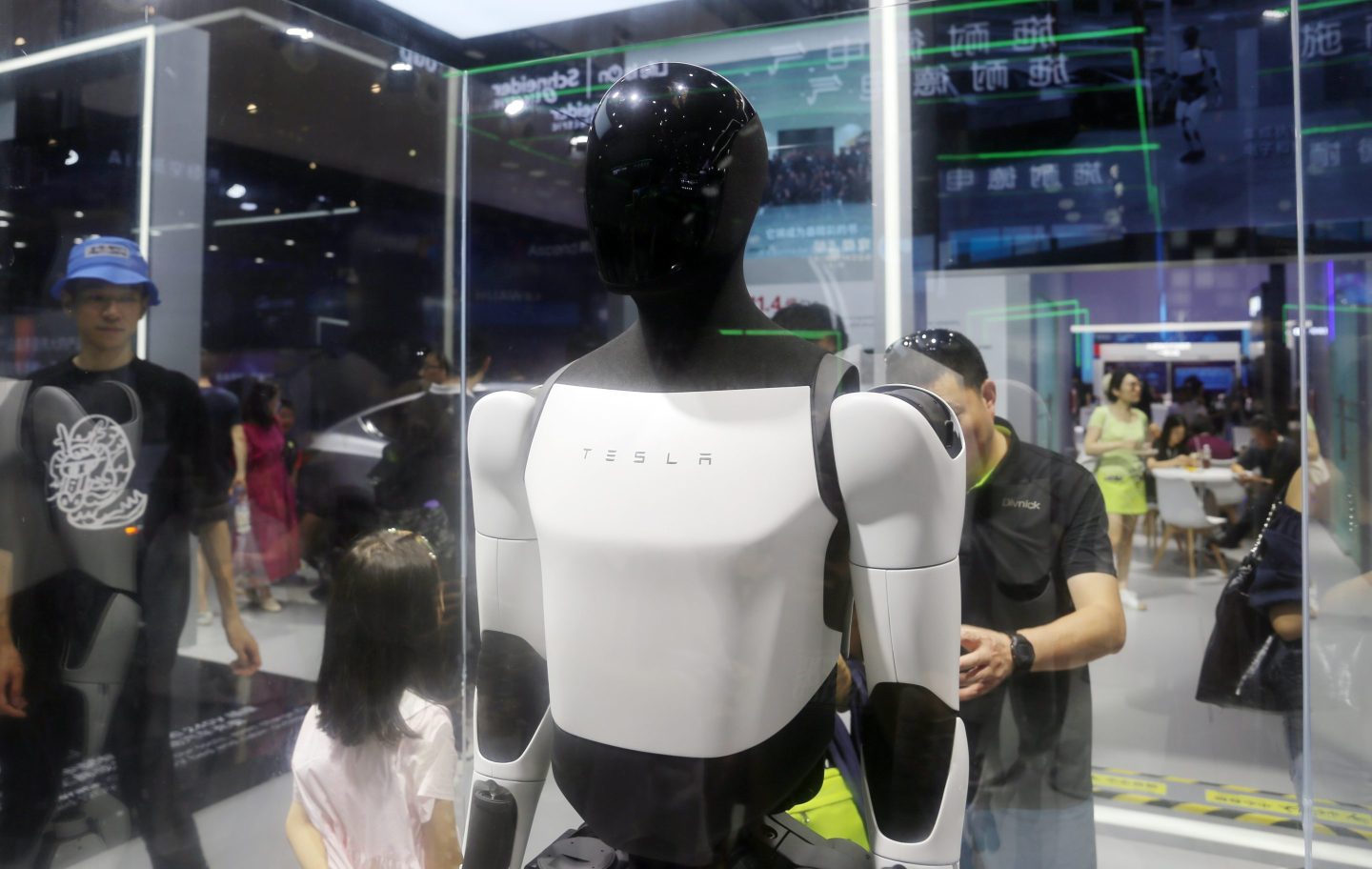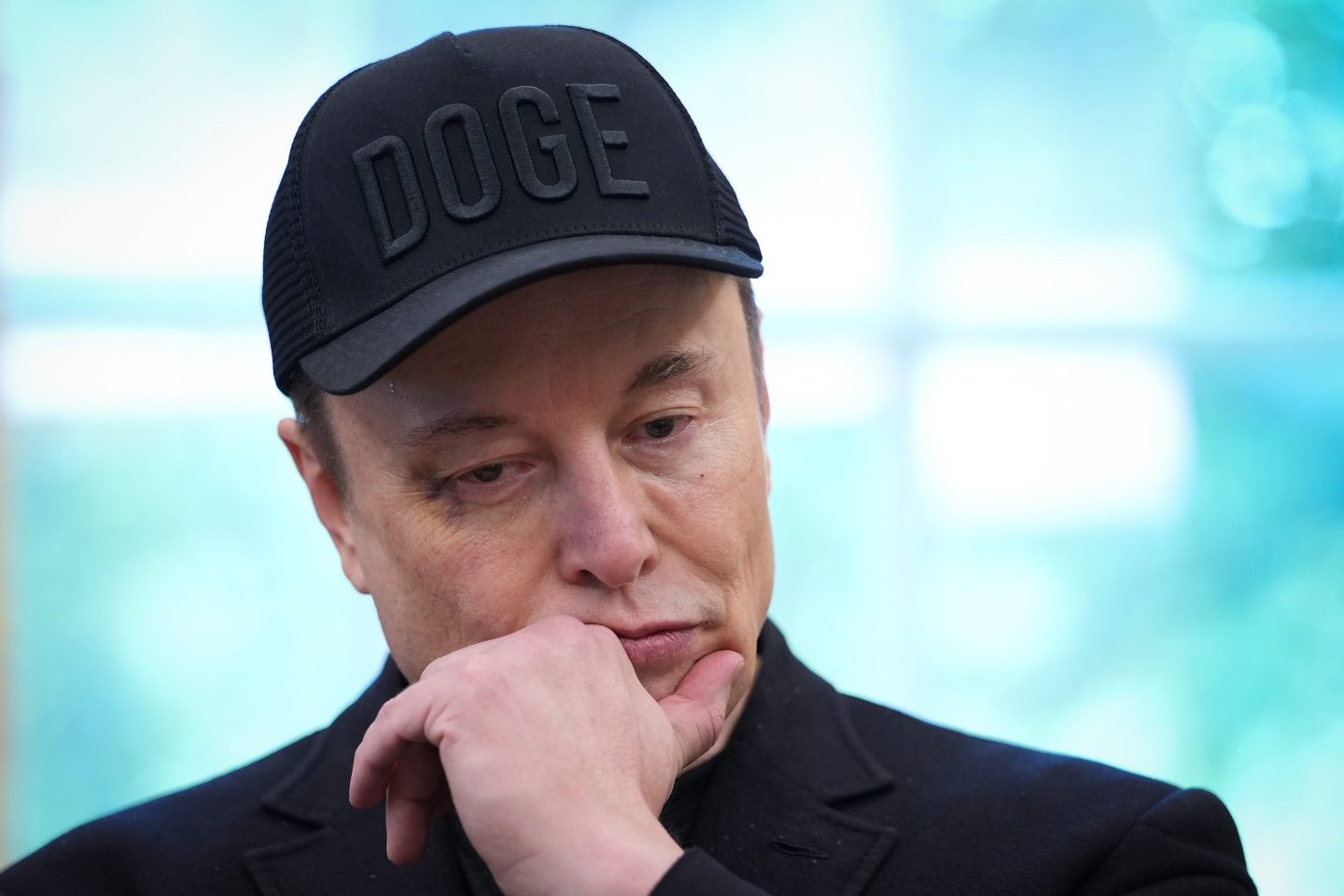Before our tour of one of Amazon’s newer robot-powered warehouses even began, our group received an unplanned reminder of the importance of workers with beating hearts and human minds: One of the facility’s robotic systems was down, we were told, and staff was working on the fix. There would be a delay.
A little while later, after humans did what they were born to do—solve problems—this reporter and around a dozen others finally entered MQY1: a 3.6 million-square-foot Amazon warehouse—the company’s second-largest anywhere—located outside of Nashville in Mt. Juliet, Tenn. But the fulfillment center’s vast size is not what Amazon was showing off on this day. It was the hundreds of robots lifting, carrying, and sorting merchandise within it, while presenting in various forms and with each model carrying its very own name.
From Pegasus and Proteus to Cardinal and Robin, the droids took the form of giant robotic hockey pucks or imposing robotic arms. Some of the mobile units carried individual packages, while others transported cages filled with dozens of orders—all headed toward rows of loading docks waiting in the back. Dozens of robots could even do so completely autonomously, meaning they didn’t have to be gated off from the rest of us—or its human colleagues—for safety, as they had learned when to slow down to navigate workers or a group of sometimes overzealous first-time visitors.
The tour comes amid a surge in interest in industrial robots, at least in part due to the AI boom. Famous billionaire backers haven’t hurt. On Thursday evening, Elon Musk showed off the latest prototype of Tesla’s humanoid robot, Optimus. The robots, some sporting cowboy hats, served drinks, played games, and mingled among the crowd at a flashy event in Hollywood. But Musk’s Optimus is years away from being commercially available. And while Amazon has tested humanoid robots made by Agility Robotics in one of its facilities and invested in the startup, the droids that are regularly seeing action at the front lines of Amazon facilities today look less like a slick science-fiction butler and more like utilitarian contraptions that operate with superhuman efficiency. But it should be noted that the autonomous mobile robots that resemble giant pucks do sport eyes that “look” up at workers. That capability was added after employees gave feedback that they weren’t confident a robot detected their presence when approaching.

In one fenced off section, towering yellow “Robin” robots comprised of an arm the size of an elephant trunk suctioned up one envelope parcel at a time from a pile below. After Robin grabbed each order, it placed it atop one of many oversized Roombas, known as Pegasus, that had been lining up nearby. Each freight-laden Pegasus then jets out of sight towards exit docks, where human workers move orders onto a truck.
The Mt. Juliet warehouse, the 11th generation of Amazon fulfillment centers, isn’t even the newest. Amazon’s first 12th generation facility, called SHV1 and located in Shreveport, Louisiana, debuted just this month. It features Amazon’s first implementation of eight different robot systems collaborating inside the same building.
One multilevel monstrosity in Shreveport, called Sequoia, can store 30 million products, and instantly retrieve items from this massive stockpile thanks to thousands of mobile robots within it. Sparrow, an AI-powered robotic arm also inside SHV1, can replace human hands just fine when it comes to grasping and manipulating a selection of 200 million different goods.
“The most exciting part,” Amazon executive Udit Madan told reporters last week, “is that we’re just getting started.”
What began inside Amazon with the acquisition of the robotics startup Kiva in 2012, has already developed into the “the largest collaborative robotics deployment in the world,” Madan added. Today, more than 75% of all Amazon customer orders originate in a facility powered by its robots. Along the way, Amazon has quietly transformed itself into the “world’s largest manufacturer and operator of industrial robotics,” according to the executive.
Look at this through another lens, and we are witnessing perhaps the largest experiment in robot-worker collaboration in history. The catch is, like any experiment, the full outcomes are yet to be known. Yet what the results lack in certainty they make up for with significance in eventually determining the way physical work will get done from this point forward.
Man vs. machine or man with machine?
For now, Amazon executives are saying all the things one might hope from one of the most powerful and consequential employers in the world, with a worldwide staff of more than 1.5 million humans. Yes, jobs are changing. Yes, some human tasks might be automated. But new ones are being birthed, the company stressed, including some the group of reporters witnessed on their visit, like a worker using a joystick to control one of the giant hockey pucks when it stopped operating as it should.
And the tasks the robots are taking – lifting the heaviest items, absorbing the most repetitive work – are some of the worst.
Tye Brady, chief technologist at Amazon Robotics, told Fortune in an interview that the idea of “people vs machines” is a “myth.” He also swatted away fantasies of Amazon eventually operating “lights out” warehouses starring robots and not much more.
“That’s not my goal at all,” Brady said. “Not even close.”
“We build our machines,” he added, “to extend human capacity.”

While the business case for increased automation replacing some human labor is clear – expectations like 25% quicker order processing, a 25% reduction in “the cost to serve” customers, and of course no personal problems or bad days to contend with as an employer – Amazon is also promising that safer worker conditions are a goal and, they say, already happening. Amazon said injuries at its robotic warehouses were 8.5% lower in 2023 than at its non-automated facilities.
Amazon says that the Sequoia system, for example, is ergonomically better for employees: It dishes out goods to human workers between their mid-thigh and mid-chest, reducing the need to crouch, or strain to pull an item from up high. The Sparrow robotic arm can deal with repetition far better than a 50-year-old’s rotator cuff might.
It’ll take time to discern whether the benefits of new machines like Sequoia and Sparrow are as clear cut as Amazon’s rosy portrayal. It’s also too early to recognize unforeseen trade-offs that may come with such changes.
Four years ago, an investigative publication reported that Amazon’s robotic facilities actually produced worse injury rates. Amazon contested those claims, arguing that the company was more aggressive in recording injuries than its peers and, later, that its peer group was actually different than what was being compared.
What is indisputable is that the introduction of some robots in earlier years created new expectations for employees that could be challenging. The original Kiva robots carried portable shelves stocked with merchandise to a worker’s station. Previously, employees picked goods off aisles upon aisles of shelves, necessitating walking 10 to 20 miles across the warehouse each day. Some hated that part of the job and were grateful for the change.
But without the need to traverse the warehouse to pick goods, the company expected those workers to pick more goods per hour off of the robot-transported shelves. Repetitive actions increased, which, especially when coupled with improper technique, can cause strains or other injuries.
Whatever the level of admission inside the company, Jeff Bezos had seen enough to vow in his last CEO letter to investors in 2021 that Amazon needed a “better vision for our employees’ success.”
Three years later, Amazon wants the world—and investors—to believe that more robots, collaborating with each other, and human colleagues, will create a better version of Amazon for its customers and its workers.
It’s a momentous time in the history of modern industrial work. And the work lives of so many are riding on it.
Are you a current or former Amazon employee with thoughts on this topic or a tip to share? Contact Jason Del Rey at jason.delrey@fortune.com, jasondelrey@protonmail.com, or through secure messaging app Signal at 917-655-4267. You can also message him on LinkedIn or at @delrey on X.












